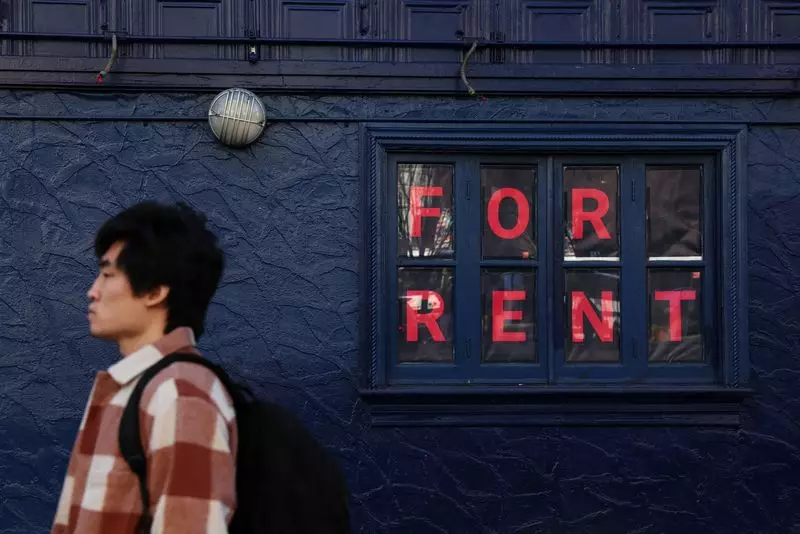The relentless upward trajectory of rent prices continues to impose significant strain on consumers, as highlighted in a recent report by the Federal Reserve Bank of Cleveland. As economic observers analyze this phenomenon, it becomes evident that the implications of ongoing rent inflation stretch far beyond individual household budgets. With the Consumer Price Index (CPI) for rent expected to hover above its pre-pandemic baseline of approximately 3.5% until mid-2026, the trajectory of inflation relief appears uncertain, marking a challenging landscape for policymakers and consumers alike.
The Rent Gap: A Key Indicator of Future Trends
A critical dimension fueling this surge in rent inflation is the expanding disparity between new rental rates and existing leases. This gap, notably broader than figures recorded prior to the pandemic, poses both a challenge and an opportunity for landlords and renters. September 2024 projections indicate this “rent gap” could approach 5.5%. Such a figure suggests that substantial rent hikes are on the horizon for current tenants, especially as existing leases slowly align with new market rates. Until this discrepancy is reconciled, the pressure on consumers will likely remain palpable, potentially stifling broader economic recovery efforts.
Moreover, this persistent rent gap brings to the forefront questions about housing affordability and accessibility in an era marked by inflationary concerns. If existing renters continue to face escalated costs without corresponding wage increases, many may find themselves financially burdened, leading to increased demand for affordable housing solutions.
Federal Reserve officials remain optimistic about achieving their inflation targets, yet the stubborn persistence of rent inflation could complicate this ambition. As central bankers initiate a rate cut campaign to normalize monetary policy, the synchrony between falling rent inflation and overall price stability will be imperative. Historically, rent prices have a significant influence on overall economic indices, and any lag in addressing this component could hinder the Fed’s capacity to maintain desired inflation levels.
In more nuanced terms, understanding the relationship between rent prices and inflation illustrates the broader economic context. As housing costs contribute to the core inflation metrics, the Fed’s approach will need to consider the potential cascading effects not only on renters but also on landlords and the housing market at large.
Economic analysts have noted a deceleration in annualized rent growth, reporting figures of 4.6% by September compared to the 6.8% observed earlier in 2023. While this trend points towards a positive decline in rent inflation, it is critical to note that the current rate still exceeds pre-pandemic norms. As highlighted by leaders from various Federal Reserve branches, the “stickiness” of current shelter prices remains a focal point. This stickiness arises from the need for existing rents to catch up with fluctuating market rates, which adds a layer of complexity to policy formulations.
Furthermore, the broader economic environment, including employment rates and job market stability, plays a pivotal role in shaping future rent trends. If job growth continues to stabilize or slow further, as indicated by recent trends, we may witness a subsequent easing of rental price increases. Such changes would reflect broader economic health, potentially alleviating some of the inflationary pressures that have persisted through the pandemic recovery phase.
As the Federal Reserve navigates the delicate balance of managing interest rates and inflation, understanding the implications of persistent rent inflation will be essential for crafting effective policy. The interplay between current economic conditions, consumer behavior, and the housing market will not only influence rental prices but also define the overarching economic environment.
As rent inflation continues its prolonged impact on the economy, stakeholders – from policymakers to renters to landlords – must engage in a collective dialogue aimed at addressing these challenges comprehensively. Only through a concerted effort to bridge the existing rent gap and foster economic inclusivity can we pave the way for a more stable and resilient future.

